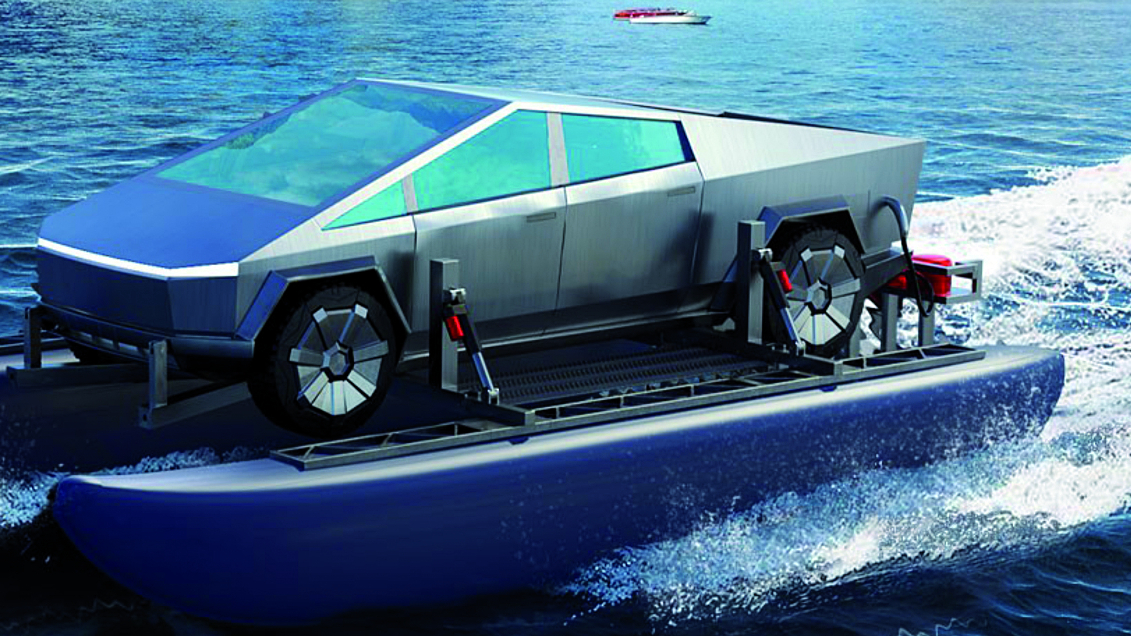Two tribes?
In England today, and perhaps it is the same in Germany, there are two different tribes. One I will call the "blue tribe", the other the "green tribe". Both tribes believe in global warming and the need to reduceCO2 emissions. However, the "blue" tribe insists that energy security must be prioritized, while the "green" tribe insists on reducingCO2 emissions as a priority.
In England, the Greens have won some victories. England has significant reserves of natural gas trapped in layers of rock that could be extracted by so-called "fracking". It is thanks to the Greens that fracking is no longer carried out in England. It is true that fracking - both in England and in the US, where it is a big, successful business - is associated with minor earthquakes, perhaps reaching level 3 on the Richter scale. The North Sea is where most of the oil and gas has been extracted, but some important reserves remain. Following public pressure, the major oil companies - Shell, Esso and others - have decided to pull out and it is not clear whether other, smaller oil companies will operate in the North Sea in the future. The British Greens seem to accept - perhaps reluctantly - nuclear energy. The German Greens probably do not. The EU has now declared that both natural gas and nuclear power are "green".
The UK now has an energy plan
 Fig. 1: Design for the reactor core of the Rolls-Royce Small Modular Reactor (SMR) The future of green energy for the UK now seems clear. It will be based primarily on a mix of nuclear and wind power. A new company has been set up for nuclear power - Rolls-Royce SMR (www.rolls-royce-smr.com). Rolls-Royce itself will be the main partner, with other partners from civil engineering and other sectors. The initial plan is to build 16 SMRs (Small Modular Reactors) at various sites around the UK, mostly on the sites of former power stations already connected to the National Grid. The SMRs will be designed for an output of approx. 470 MW each. The production costs are estimated at 2 billion pounds sterling (2.4 billion euros) each. Around 90% of these reactors will be built at the plant. By comparison, the Hinkley Point C nuclear power plant currently under construction will cost around 22 billion pounds sterling (26.5 billion euros) and deliver 3.2 GW. Completion is planned for 2026. Flamanville 3 in Normandy has a capacity of 1.65 GW and an estimated final cost of 12.7 billion euros; it is scheduled to go into operation in 2023. The completion of these last two large nuclear power plants has been delayed, and the initial costs have risen sharply. Rolls-Royce is now looking for a site for a new factory to build these nuclear power plants. The British government must decide whether to rely on SMRs in the future or whether to build another 3 GW plant. CGN (China General Nuclear) would like to build one or two such large plants in England, but the UK, like many other European countries, is not sure it wants to develop its links with China. In terms of cost: Hinkley C provides energy for around £7 billion/GW (€8.4 billion). Flamanville is slightly cheaper at 7.7 billion euros/GW. The SMR of Rolls-Royce is 4.25 billion pounds/GW (5.1 billion euros). All these figures are projections. Figure 1 shows the core of the Rolls-Royce SMR.
Fig. 1: Design for the reactor core of the Rolls-Royce Small Modular Reactor (SMR) The future of green energy for the UK now seems clear. It will be based primarily on a mix of nuclear and wind power. A new company has been set up for nuclear power - Rolls-Royce SMR (www.rolls-royce-smr.com). Rolls-Royce itself will be the main partner, with other partners from civil engineering and other sectors. The initial plan is to build 16 SMRs (Small Modular Reactors) at various sites around the UK, mostly on the sites of former power stations already connected to the National Grid. The SMRs will be designed for an output of approx. 470 MW each. The production costs are estimated at 2 billion pounds sterling (2.4 billion euros) each. Around 90% of these reactors will be built at the plant. By comparison, the Hinkley Point C nuclear power plant currently under construction will cost around 22 billion pounds sterling (26.5 billion euros) and deliver 3.2 GW. Completion is planned for 2026. Flamanville 3 in Normandy has a capacity of 1.65 GW and an estimated final cost of 12.7 billion euros; it is scheduled to go into operation in 2023. The completion of these last two large nuclear power plants has been delayed, and the initial costs have risen sharply. Rolls-Royce is now looking for a site for a new factory to build these nuclear power plants. The British government must decide whether to rely on SMRs in the future or whether to build another 3 GW plant. CGN (China General Nuclear) would like to build one or two such large plants in England, but the UK, like many other European countries, is not sure it wants to develop its links with China. In terms of cost: Hinkley C provides energy for around £7 billion/GW (€8.4 billion). Flamanville is slightly cheaper at 7.7 billion euros/GW. The SMR of Rolls-Royce is 4.25 billion pounds/GW (5.1 billion euros). All these figures are projections. Figure 1 shows the core of the Rolls-Royce SMR.
A few weeks ago, the Polish government signed an agreement with the American company NuScale to build SMR plants in Poland. The NuScale reactor has a capacity of 77 MW and will probably be built in a group of 12 modules, i.e. with a capacity of slightly less than 1 GW. The question now is whether large nuclear power plants have a future, or whether factory-built SMRs will take their place. According to President Macron, who said in February that the answer is yes - France is planning to build at least six new large nuclear power plants. All these companies see a promising export market for nuclear reactors, and it is clear that there will be strong competition. Russia is also active in this area.
Wind energy
Wind energy already makes a major contribution to meeting the UK's electricity needs, at over 25%, and this is set to double by 2030. The expansion will mainly focus on offshore wind farms and onshore wind farms. Offshore wind turbines will increasingly generate energy on floating platforms and will no longer be anchored to the seabed. And: wind energy is now very competitive. If we expand it over the next few years, the future looks very bright. Nuclear fusion also offers great potential.
We have double-glazed windows, we have triple-glazed windows. We have windows with coated glass surfaces. And now perhaps - electric windows. Scientists have developed a prototype window with switchable absorption properties that can absorb heat in winter and reflect it in summer. An article in the journal ACS Photonics showed that this is possible without making it visibly darker for the occupants of the house, as the material used is highly selective in the wavelengths of light it absorbs or reflects. The window consists of a film that is only 12 μm thick and contains a material that changes its state when heated to high temperatures using a transparent heater. A transparent heater causes a structural realignment of the atoms inside, causing them to switch between a crystalline and non-crystalline state and thus change their properties. The heater only needs to be applied for a fraction of a second to bring about this change.
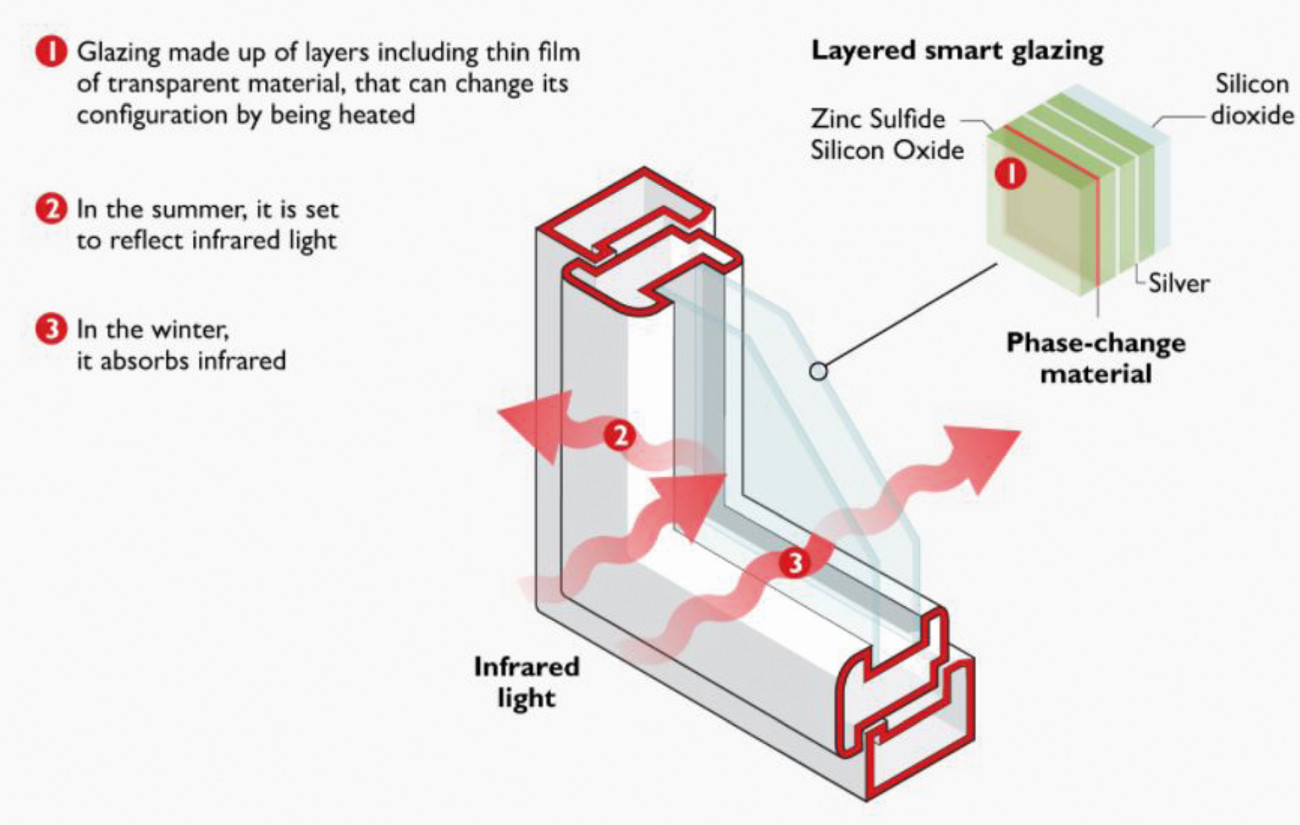 Fig. 2: Electrically switchable window
Fig. 2: Electrically switchable window
In one state, the film reflects infrared light and keeps the room cooler. In another, it absorbs the light and radiates it back into the room. The scientists believe that they can improve the energy efficiency of standard double glazing by a fifth to a third in this way. "The important thing is that the visible light is transmitted almost identically in both states, so you don't notice the change in the window," says Nathan Youngblood from the University of Pittsburgh. The low-emissivity coating used was a chalcogenide-based phase change material (Ge20Te80), which can modulate the solar heat gain of a window while maintaining neutral coloration and constant light transmission at visible wavelengths. The study also demonstrated the controlled conversion of absorbed near-infrared energy into far-infrared radiation, which can be used to heat the interior of a building, enabling rapid submillisecond switching using transparent electrical heating elements integrated into glass substrates. These combined features result in a smart window that is efficient and aesthetically pleasing, which is critical to the successful adoption of green technology (Fig. 2).
Currently, the researchers have only tested the film on a very small pane of glass. To bring the technology to market, Youngblood and his colleagues will need to test the technology on a window-sized surface, which will also require distribution of heating. Ultimately, Youngblood says, they want to combine the technology with intelligent sensors that adjust according to temperature and sunlight.
"It would be beneficial to switch back and forth. Even in winter, you could switch depending on the outside and inside temperature and sunlight," he said. "However, the results show that the concept is very promising and with further research very good efficiencies can be achieved.
Source: "Reconfigurable Low-Emissivity Optical Coating Using Ultrathin Phase Change Materials". N Youngblood et al. Issue ACS Photonics: 2022,9 (1) ss 90-100. https://doi.org/10.1021/acsphotonics.1c01128
Science fiction becomes reality - flying cars
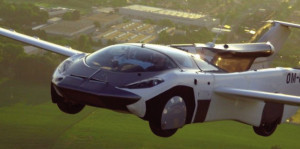 Fig. 3: The AirCar in flightFlyingcars have long been described in science fiction stories and in recent years they have actually become a reality. A few months ago, I reported on the latest development, which received its airworthiness certificate from the Slovakian government in January of this year. The so-called "AirCar" can fly at speeds of up to 160 km/h and reach an altitude of 2500 meters. It is powered by a BMW petrol engine and can be converted from a car to an airplane in less than 3 minutes (Fig. 3). Two questions arise: will it go into production and, if so, will it be a commercial success? The answer will depend in part on how long the runway needs to be. And whether it can land on main roads or side streets? With its wings unfolded, it would have a width of around 12 to 15 meters, taking up at least two lanes of a road.
Fig. 3: The AirCar in flightFlyingcars have long been described in science fiction stories and in recent years they have actually become a reality. A few months ago, I reported on the latest development, which received its airworthiness certificate from the Slovakian government in January of this year. The so-called "AirCar" can fly at speeds of up to 160 km/h and reach an altitude of 2500 meters. It is powered by a BMW petrol engine and can be converted from a car to an airplane in less than 3 minutes (Fig. 3). Two questions arise: will it go into production and, if so, will it be a commercial success? The answer will depend in part on how long the runway needs to be. And whether it can land on main roads or side streets? With its wings unfolded, it would have a width of around 12 to 15 meters, taking up at least two lanes of a road.
In English there is the saying "Neither Fish nor Fowl". Is it appropriate to use these words to describe the AirCar?
The storage of energy
I've written a lot recently about new methods of energy generation. But energy storage, especially for renewable energies such as wind or solar, is also increasingly coming into focus. A company that won the Best of Innovation Award 2022 at the US technology trade fair CES earlier this year could have the solution. The Dutch start-up Ocean Grazer has developed the Ocean Battery, which stores energy below wind farms. When there is a surplus of electricity, the system pumps water from an underground reservoir into a robust, flexible bladder on the seabed. It is not unlike a large bicycle inner tube (Fig. 4).
 Fig. 4: The Ocean Battery uses a bladder on the seabed that holds water under pressure. The water in these tubes is pressurized so that when it is drained, it flows quickly and is fed through turbines that are also located on the seabed and generate electricity when needed "The Ocean Battery is basically based on the same technology as water storage, where water is pumped back through a dam into a river, but now modified so that you can use the principle on the seabed," says CEO Frits Bliek.
Fig. 4: The Ocean Battery uses a bladder on the seabed that holds water under pressure. The water in these tubes is pressurized so that when it is drained, it flows quickly and is fed through turbines that are also located on the seabed and generate electricity when needed "The Ocean Battery is basically based on the same technology as water storage, where water is pumped back through a dam into a river, but now modified so that you can use the principle on the seabed," says CEO Frits Bliek.
A prototype designed for deep waters has already been tested in the port of Groningen in the Netherlands (Fig. 5). The company is now preparing to test a second system that has been modified for shallower water in a lake in the north of the Netherlands. This system is due to go into operation next year. Many onshore wind farms already use batteries to store extra energy, but there are a number of problems when these are to be used at sea.
"If you want to build a large-scale system at sea, you would also have to build a huge platform of sea containers, and that has proven to be very, very expensive. What's more, the batteries don't last very long," says Frits Bliek. While lithium-ion batteries can withstand 5,000-10,000 charging cycles, the Ocean Battery can manage up to one million cycles. Although the cost of storage is roughly the same, the Ocean Battery is much cheaper overall due to its longer service life.
"We've found that it can be used in shallow waters wherever wind farms are built, and it ends up being quite cost-effective," says Bliek. He also believes that the technology can be used in conjunction with solar farms if there is a lake nearby.
 Fig. 5: The Ocean Grazer prototype is lowered into the water - a larger test is planned
Fig. 5: The Ocean Grazer prototype is lowered into the water - a larger test is planned
Energy storage - Australian style
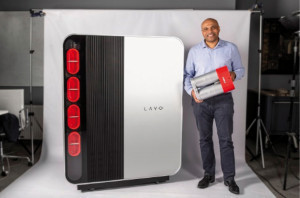 Fig. 6: The LAVO hydrogen energy storage systemAcompletely different form of energy storage that serves a completely different market comes from the Australian company LAVO, which is working with the University of New South Wales. LAVO is a hydrogen hybrid battery that stores over 40 kWh of electricity - enough to power an average Australian home for two days. Combined with standard rooftop solar panels, LAVO generates green hydrogen for renewable energy on demand.
Fig. 6: The LAVO hydrogen energy storage systemAcompletely different form of energy storage that serves a completely different market comes from the Australian company LAVO, which is working with the University of New South Wales. LAVO is a hydrogen hybrid battery that stores over 40 kWh of electricity - enough to power an average Australian home for two days. Combined with standard rooftop solar panels, LAVO generates green hydrogen for renewable energy on demand.
LAVO uses a patented metal hydride to store hydrogen in a metal alloy to create the world's first hydrogen battery with long-term storage in a safe container. The device is said to cost the same as a lithium-ion battery but last three times as long. The patented metal alloy, which stores and regulates hydrogen at a pressure of 30 bar, is 100% recyclable and the hydride enables 20,000 storage and charging cycles. The system also includes a water electrolyzer, a water purifier and hydrogen fuel cells. Figure 6 shows the LAVO system.
Here too, the question arises as to how economically successful this project can be. For houses that are not connected to the electricity grid, it could be very suitable. But in Europe, unlike Australia, most houses are connected. There is also the question of overall efficiency in the charge-discharge cycle. For lithium batteries, this is around 90 %. With the LAVO system, it is only around 50 %. However, the technology could be successful in "niche markets". Just think of the famous "Australian outback".
Tesla Cybertruck picks up speed
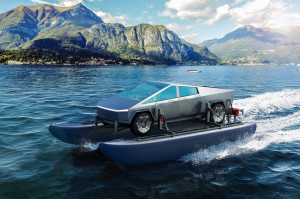 Fig. 7: The Tesla Cybertruck can be converted into a catamaranAfew monthsago,I described the Tesla Cybertruck, a pick-up truck that is even more revolutionary than the Tesla cars. Since its market launch, several companies have adapted it for more specialized applications. This now includes the "Cybercat" - a catamaran based on the Cybertruck. American materials scientist Anthony Diamond has developed the Cybercat accessory, in which the all-electric vehicle is equipped with two attachable pontoons and outboard motors (Fig. 7). The assembly or disassembly of the Cybercat can easily be done by one person in less time than launching a boat. Since all components of the catamaran can be disassembled into various movable parts, they can be conveniently stowed in the cargo hold of the Cybertruck.
Fig. 7: The Tesla Cybertruck can be converted into a catamaranAfew monthsago,I described the Tesla Cybertruck, a pick-up truck that is even more revolutionary than the Tesla cars. Since its market launch, several companies have adapted it for more specialized applications. This now includes the "Cybercat" - a catamaran based on the Cybertruck. American materials scientist Anthony Diamond has developed the Cybercat accessory, in which the all-electric vehicle is equipped with two attachable pontoons and outboard motors (Fig. 7). The assembly or disassembly of the Cybercat can easily be done by one person in less time than launching a boat. Since all components of the catamaran can be disassembled into various movable parts, they can be conveniently stowed in the cargo hold of the Cybertruck.
Using interconnected sensors, power/data connections and pontoon pressure transducers, the Cybercat digitally checks that the parts are correctly assembled before launching the vehicle into the water. The properties of the inflatable pontoons give the Cybercat a ground clearance of 25 cm. Once on the water, the electric outboard motors, the pontoons and the wings are folded down while the wheels are retracted.
Diamond's catamaran kit has two pontoons and five 50 kW outboard motors, which are designed to reach speeds of over 40 km/h. The design is currently patent pending. The design is currently patent pending, but interested parties can make a reservation on the Cybercatamaran website. The cost of the conversion is around 30,000 euros.
On the stock exchanges
A so-called "urban miner" that recycles metals for reuse in batteries for electric vehicles is preparing to list on the London Stock Exchange. Neometals, which is already listed in Australia with a valuation of around 500 million euros, is aiming for a dual listing on AIM, London's junior stock exchange. Chris Reed, the company's managing director, described Neometals as a "new-age urban miner". The company currently has no revenue but is developing projects across Europe. These include a lithium-ion battery recycling plant in Germany, which is expected to start production at the end of March. The company is planning to open larger factories in Europe or North America. Demand for metals such as lithium, which are used in batteries, is forecast to rise as the world switches to electric vehicles to combat climate change. Europe does not have the natural resources needed to produce batteries. Recycling is therefore important to build a stable supply chain for car manufacturers, rather than relying on imports. Projects in development include recycling plants for lithium-ion batteries, where the batteries are shredded to create a 'black mass' - a mixture of lithium, nickel, copper, cobalt and graphite - which can then be refined. Other initiatives include a vanadium recycling project in Scandinavia and the conventional mining of titanium and vanadium in Western Australia.

